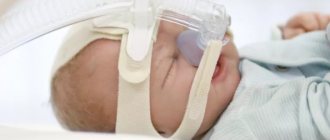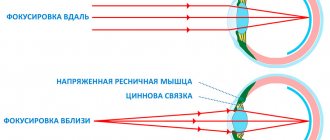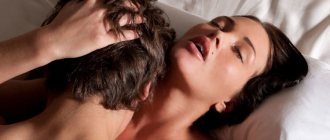Tremors are uncontrollable movements caused by involuntary muscle contractions. The symptoms most often appear in the hands and head. The causes of the disease are various conditions. In some cases, tremor is physiologically temporary. However, more often uncontrolled movements worsen the quality of life.
According to the international classification of diseases ICD-10, tremor is coded G25. Depending on the cause, the following disease codes are distinguished:
- G25.0 - essential;
- G25.1 - while taking medications;
- G25.2 - intentional;
- G25.3 - myoclonus;
- G25.4 - chorea;
- G25.5 - other types of chorea;
- G25.6 - tics due to medications;
- G25.8 - specified extrapyramidal and movement disorders;
- G25.9 - unspecified extrapyramidal and movement disorders.
You can undergo a full course of examination in Moscow to identify the causes of tremor at the Yusupov Hospital. The clinic has modern equipment that meets international standards. Doctors at the neurology clinic provide complex therapy for tremor using the most effective medications, physiotherapeutic procedures, and therapeutic exercises. Initially, neurologists establish the cause of uncontrolled movements and eliminate it. Doctors from various specialties take part in the treatment process: neurologists, rheumatologists, endocrinologists, and rehabilitation specialists. Severe cases of tremor are discussed at a meeting of the expert council with the participation of candidates and doctors of medical sciences, doctors of the highest qualification category.
Causes
Tremors in the hands and head can occur due to various reasons. The importance of identifying the etiological factor lies in the need to determine appropriate treatment. Among the main causes of tremor are:
- Osteochondrosis. Due to pinching of the spinal nerve fibers, circulatory and nutritional disorders occur. Along with tremor, swelling of the face and cardiovascular disorders often appear;
- Alcohol and drug addiction. Taking excessive amounts of alcohol or medications can cause tremors;
- History of trauma. Damage to the nerve roots due to trauma is often reflected in the form of tremors;
- Dysfunction of the central nervous system. The tremor may begin as mild twitching. As the condition worsens, the severity of the symptom increases;
- Psycho-emotional experience. Most often, tremors due to stress occur in infants. This is a variant of the norm if the symptom appears sporadically.
- Excessive mental stress. Worries teenagers or students during exam periods. If severe headache, loss of coordination, aggression or apathy appear along with tremor, you should consult a doctor;
- Degenerative changes in the brain. Diseases such as Parkinson's disease and dementia can be accompanied by tremors. You can control the severity of symptoms with the help of medications that are selected by your doctor.
Diseases that cause trembling of the limbs
There are various diseases, the presence of which can lead to tremor. Among them are:
- Endocrine pathology: hyperparathyroidism, thyrotoxicosis, pheochromocytoma, hypoglycemia;
- Strokes of various origins;
- Infectious diseases: encephalitis, neurosyphilis;
- Metabolic disorders: Wilson-Konovalov, Hallervorden-Spatz disease;
- Tumors: angiomas, cancer, hematomas;
- Polyneuropathy of various origins.
- Neurological pathology: multiple sclerosis, encephalopathy, cerebral palsy, Alzheimer's disease, Parkinson's disease, Pick's disease, Huntington's chorea, cerebellar degeneration.
In most cases, tremor is a symptom of Parkinson's disease. There is an opinion that this is a problem for older people (previously this was considered the norm). But essential tremor (also called “hereditary”) now occurs in young people, and the proportion of such cases reaches 20%. Parkinsonism ranks second among neurodegenerative diseases. It is second only to Alzheimer's disease. 8 out of 10 cases of Parkinson's disease develop unnoticed and usually manifest themselves only in disturbances in motor activity: rigidity or increased muscle tone, stiffness of movement.
Tremors are not always associated with Parkinson's disease. It often occurs in the case of autoimmune processes or dysfunctions of the central nervous system, endocrine disorders, and may be a consequence of taking medications. Neurologists use the latest laboratory and instrumental studies to determine the cause of tremor. If tremor is caused by disturbances in the functioning of the central nervous system, then it cannot be treated, but modern drugs significantly reduce the manifestations of the disease and improve the patient’s quality of life.
Tremor as a hereditary disease
Essential tremor is one of the types of pathological forms of tremors. The development of essential tremor is associated with the mutation of certain genes. The disease is inherited in an autosomal dominant manner, so the likelihood of developing tremor in women and men is the same.
The main feature of essential tremor is the high risk of developing the disease in the patient’s children and grandchildren. In this case, signs of the disease begin to be observed at an early age. A gene mutation that has not previously appeared in a family may occur spontaneously in one of the members. In this case, a sporadic form of the disease develops.
If a patient comes to the Yusupov Hospital with complaints of body tremor, the causes of the disorder are established during an examination by a neurologist and highly informative studies.
Make an appointment
Causes of internal tremor
Internal tremors in the body are a common phenomenon that can be caused by a sharp drop in temperature. The development of internal tremor occurs as a result of the production of hormones in a stressful situation for the body. These hormones help overcome unpleasant conditions, but they may not be fully used. A short tremor that occurs as a result of an excess of hormones in the body does not pose a danger to human health.
Severe body tremors may indicate the development of a pathological process in the body. Tremor brings discomfort to a person; in most cases, it is difficult to cope with pathological tremor on your own. Experienced specialists at the Yusupov Hospital determine why the whole body tremor developed in this patient using modern diagnostic equipment. Neurologists at the Yusupov Hospital help patients stabilize their nervous system and improve their quality of life using the achievements of modern medicine.
Expert opinion
Author: Georgy Romanovich Popov
Neurologist, Candidate of Medical Sciences
Almost every person has experienced tremors, for example, when being in the cold or before an exciting event. If the tremor does not stop for a long time, you need to be examined. Usually it is a symptom of Parkinson’s disease and is considered to be a problem for older people (it used to be the norm), but if we talk about essential tremor (also called “hereditary”), now it also occurs in young people, and the proportion of such cases reaches 20%.
Parkinson's is in second place among neurodegenerative diseases, second only to Alzheimer's disease. 8 out of 10 cases of Parkinson's disease develop unnoticed and usually manifest themselves only in disturbances in motor activity: muscle rigidity or hypertonicity, stiffness of movement.
Tremor is not always associated with Parkinson's disease; it can often indicate serious autoimmune processes or disorders of the central nervous system, endocrinological disorders, or side effects from taking medications. In any case, you need to undergo an examination and first of all check the brain using MRI, CT, and EEG.
If tremor is caused by disturbances in the functioning of the central nervous system, then it cannot be treated, but modern drugs significantly reduce its manifestations and improve the patient’s quality of life.
Causes of tremors in the hands and other parts of the body, tactics
Tremor is the involuntary shaking of body parts, which can be caused by a variety of reasons.
Tremor of the chin in newborns causes the same clinical concern as tremors of the limbs in the elderly. This phenomenon is manifested by rapid rhythmic movements of some part of the body caused by muscle contraction. This reduction, in turn, is provoked by a failure in the transmission of impulses along the nerve endings.
It is necessary to distinguish physiological tremor from pathological.
The physiological type of tremor can be provoked by transient conditions and does not indicate organic pathology on the part of any organs or systems. Most often, such tremor occurs against the background of:
- emotional stress is one of the common causes of hand tremors;
- anxiety - if it does not drag on over time and does not require specialized help;
- fatigue - for example, after too intense exercise in the gym;
- hypothermia.
In this article we will talk about pathological tremor - caused by diseases and pathological conditions.
Degrees
Determination of the degree of tremor is required to establish the severity of the disease. Based on this criterion, the need to prescribe one or another therapy is judged. Tremor is divided into:
- Minor. Rare attacks that recur at regular intervals. The symptom does not affect the patient's quality of life.
- Moderate. Tremor prevents small movements. In this regard, the quality of life and ability to work decreases.
- Significant. A pronounced pathological symptom is the cause of disability. The patient cannot care for himself due to lack of control over movements.
Parents' actions
Even in the absence of abnormalities, tremor of the lower lip clearly indicates an underdeveloped nervous system. And the task of parents is to improve the conditions for her adaptation to the external environment in every possible way. Here are some simple recommendations:
- Calm family environment. Too harsh voices and loud noises cause discomfort in the baby, especially in newborns. Of course, we are not talking about complete silence, but quarrels between parents, the TV playing at full volume, and similar noisy sounds do not at all contribute to the emotional balance of the child. Stick to routine activities for at least the first month of your baby’s life.
- Caring attitude. Although the baby does not understand the words, he feels the mood of the parents and their attitude towards him. Warmth and affection will create a soft positive mood in the child, and the nervous system will react positively.
- Eliminating possible causes of stress. Having discovered a situation in which the baby immediately becomes agitated, the lower lip, arm, or leg are shaking, you should simply avoid this in the future. The exceptions are bathing, dressing, feeding - there is no escape from them. But you can soften these manipulations by humming a quiet song or talking to your newborn in a soft, soothing voice.
- Maintaining a daily routine. The baby needs to eat on time, sleep, and regularly walk outside.
- Maternal massage. It receives a lot of attention from neurologists and neonatologists. Especially if the baby was born premature. Any gentle stroking of the skin, rather than intense rubbing. This massage is needed not so much for muscle tone, but to create the feeling of comfort that the child had when he was in his mother’s belly.
Varieties
Tremors are classified according to causes and symptoms. In accordance with this, the following forms of pathology are distinguished:
- Essential. Most often it is hereditary. It is considered a benign symptom. Occurs in people over 60 years of age. The causes of essential tremor are not fully understood.
- Rest tremor. Characteristic of Parkinson's disease. Tremor appears in the hands, rarely in the legs, chin, and lip. This type of pathology is characterized by unilateral damage.
- Mesencephalic. Combined type of tremor. Occurs as a result of stroke, traumatic brain injury, tumor formations in the skull, multiple sclerosis.
- Psychogenic. The provoking factor for the appearance of this type of tremor is stress. The severity of the symptom depends on the strength of psycho-emotional stress.
Causes and symptoms of tremor in infants
Signs of tremor can be noticed in almost all children immediately after birth. Most often this is:
- twitching of arms and legs;
- chin trembling;
- twitching of lips.
Basically, symptoms of tremor in infants appear under the following circumstances:
- if the fetus had hypoxia;
- under circumstances associated with tension - during excitement, during crying, when painful sensations occur;
- in premature babies (due to immaturity of the nervous system).
Tremors often go away on their own before the age of 3 months. If it occurs at a later age, you should consult a doctor.
Diagnostics
The sooner the study is carried out, the faster the causes of tremor can be established. Doctors at the Yusupov Hospital conduct a full range of examinations necessary to diagnose tremor. New equipment allows you to quickly and effectively determine the causes of the disease and conduct a course of appropriate therapy. According to international recommendations, to identify the etiological factor of tremor, the following examinations are required:
- CT. Thanks to the study, it is possible to identify pathological foci in the brain.
- Positron emission tomography. Allows you to assess the functional ability of the parts of the brain responsible for coordination of movements.
- MRI. Informative research method. Allows you to identify changes in the structure of the brain at the initial stages.
- Electroencephalography. A research method based on recording the bioelectrical activity of the brain.
- Electromyography. A study prescribed to determine the functional capacity of the neuromuscular system.
The scope of diagnostic measures is determined individually. It depends on the severity of the condition, the age of the patient and the presence of concomitant diseases.
Treatment of the syndrome
Tremor can be treated at home if it is caused by physiological reasons. This applies to both adults and children of any age. In case of pathological etiology of the syndrome, complex therapy is prescribed aimed at eliminating the primary pathological process.
In adults
If shaking your chin is a consequence of excitement, you need to normalize your emotional state by learning to relax. There are various techniques that can be used to restore the mental system (yoga, meditation, etc.). It is recommended to fall asleep at the same hours every day and spend at least 7-8 hours sleeping at night. Experts recommend sleeping on a low pillow. You can put a bag of medicinal herbs in your pillowcase that have a calming effect.
Before going to bed, it is not recommended to stress the nervous system by watching programs or films with an exciting effect, or playing emotional games. It is better to give preference to a calm home environment: reading, drawing, etc.
Other recommendations for the treatment of chin tremor include:
- Daily walks before bed in the fresh air and physical exercises that relieve the load on the spine. The fact is that many people lead a sedentary lifestyle, and this is a source of disruption in the delivery of oxygen to the brain. Therefore, you need to relax the cervical area.
- Maintaining a proper diet. The diet should consist of foods that include sufficient amounts of iodine. So, eating buckwheat, chicken eggs, and seafood is beneficial. It is especially important to adhere to this recommendation for people who are susceptible to hormonal changes and emotional disturbances. On the contrary, you need to limit your consumption of tea and coffee.
- Taking vitamin complexes to strengthen the immune system.
Physiological twitching of the chin, caused by a disturbance in the emotional background, can be treated with medications based on natural ingredients (herbs, plant extracts, etc.). Serious medications are taken only as prescribed by a doctor.
In children
Tremor in a child’s hands, lower extremities, chin, or other part of the body requires timely consultation with a doctor and finding out the cause of the condition. Only taking into account the source of the syndrome is treatment prescribed, which in some cases is required even with normal development of the body as a whole. As a rule, treatment for tremors in one-month-old babies and older babies is carried out by a neurologist.
It is recommended to do a massage and undergo swimming sessions and therapeutic exercises. The child needs to be provided with complete peace and a friendly environment around. Decoctions and infusions of medicinal herbs are added to the baths with a calming effect. If tremor of the arms or chin persists after reaching 1 year, drug therapy is carried out using antihypoxic drugs that improve the delivery of oxygen to the cerebral region.
No treatment is required if the chin, legs or arms of a newborn tremble after sleeping or feeding. In the first case, the nervous system is not fully strengthened, which makes it impossible to quickly switch between states. When feeding, the baby may take an uncomfortable position, which is accompanied by slight trembling, which disappears after finishing feeding.
If you start treating tremor in a full-term or premature baby in the first month of life, you can quickly get rid of this condition, but the prognosis largely depends on the cause that caused the syndrome. In the absence of therapy at home, which is associated with changes in the child’s living conditions, you need to consult a doctor, because the source may lie in dangerous neurological disorders.
It is equally important for an adult to visit a doctor if chin trembling has become a frequent concern for no apparent reason. Otherwise, dangerous consequences can result, especially if the tremor is caused by the presence of a tumor-like neoplasm in the cerebral region or another serious disorder.









